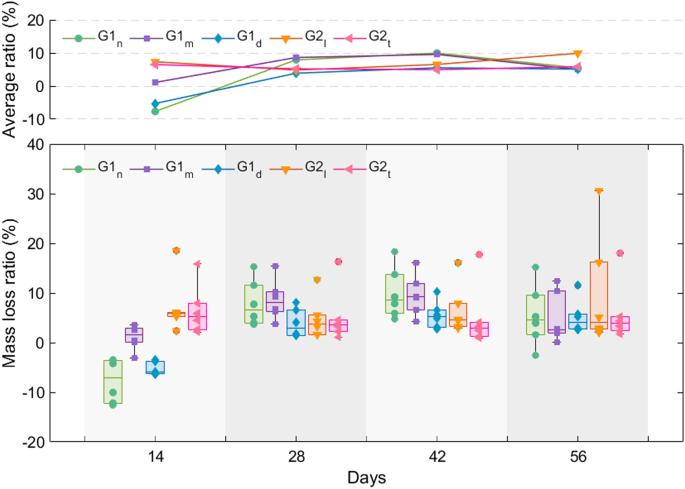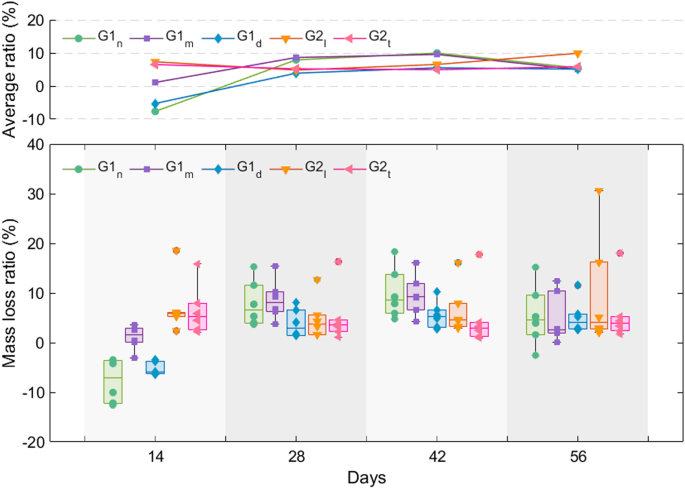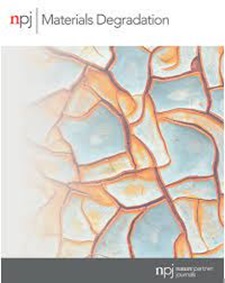真菌侵袭下工程竹抗压强度的退化
IF 6.6
2区 材料科学
Q1 MATERIALS SCIENCE, MULTIDISCIPLINARY
引用次数: 0
摘要
胶层竹(glubam)是一种用于建筑结构和室内设计的工程竹材料。本文研究了黑曲霉(Aspergillus niger)在厚、薄条状胶板上14 ~ 56 d的定殖,并对其物理、力学(压缩)和微观特性进行了研究。采用二度碳化处理,提高了厚条胶的抗真菌性能。感染56 d后,深度炭化厚条棒材的抗霉菌性能优于中等炭化和未炭化样品。对于薄条状胶条,考虑了与竹纤维主方向平行和垂直的两种方向。在所有真菌试验中,纵向薄条状胶粒保持了良好的抗压性能,而横向样品则保持了稳定的抗压强度。本文报道了不同真菌暴露时间下的质量损失、颜色变化、抗压强度、压缩弹性模量的实验值,以及光学和扫描电镜下的微观结构观察。本文章由计算机程序翻译,如有差异,请以英文原文为准。


Compressive strength degradation of engineered bamboo subjected to fungal attack
Glue laminated bamboo (glubam) is a type of engineered bamboo material developed for applications in building structures and interiors. This paper focuses on the fungal (Aspergillus niger) colonization from 14 to 56 days in thick- and thin-strip glubam board with the investigation of physical, mechanical (compression), and microcosmic properties. Two-degree of carbonization treatment was employed to improve the antifungal property of the thick-strip glubam. After 56 days of infection, the deep-degree carbonized thick-strip glubam presents better anti-mold properties than medium and non-carbonized specimens. For thin-strip glubam, both parallel and perpendicular to the main bamboo fiber direction were considered. The longitudinal thin-strip glubam retains decent compressive properties, while the transverse specimens stay a stable compressive strength along all fungal tests. The paper reports the experimental values of mass loss, color changes, compressive strengths, modulus of elasticity in compression, and microstructure observations from optical and SEM microscopy at different fungal exposure timespans.
求助全文
通过发布文献求助,成功后即可免费获取论文全文。
去求助
来源期刊

npj Materials Degradation
MATERIALS SCIENCE, MULTIDISCIPLINARY-
CiteScore
7.80
自引率
7.80%
发文量
86
审稿时长
6 weeks
期刊介绍:
npj Materials Degradation considers basic and applied research that explores all aspects of the degradation of metallic and non-metallic materials. The journal broadly defines ‘materials degradation’ as a reduction in the ability of a material to perform its task in-service as a result of environmental exposure.
The journal covers a broad range of topics including but not limited to:
-Degradation of metals, glasses, minerals, polymers, ceramics, cements and composites in natural and engineered environments, as a result of various stimuli
-Computational and experimental studies of degradation mechanisms and kinetics
-Characterization of degradation by traditional and emerging techniques
-New approaches and technologies for enhancing resistance to degradation
-Inspection and monitoring techniques for materials in-service, such as sensing technologies
 求助内容:
求助内容: 应助结果提醒方式:
应助结果提醒方式:


